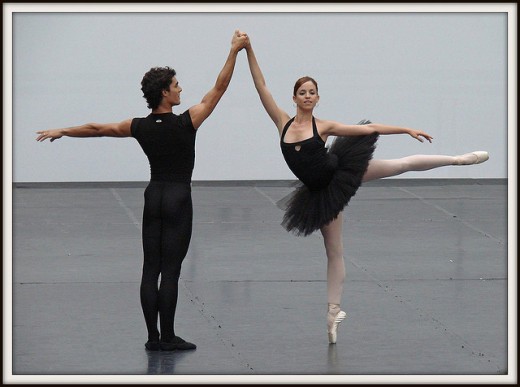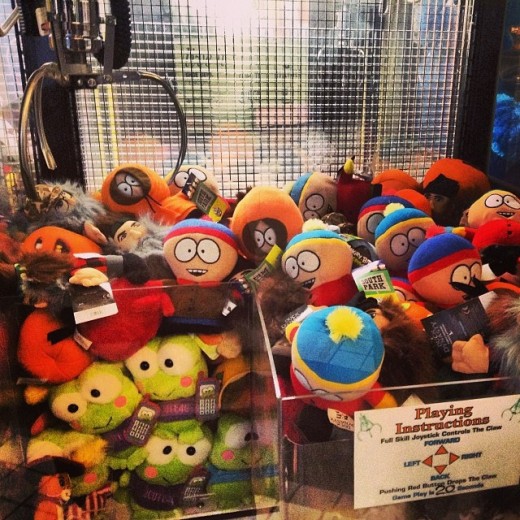Make Them Dance: A Guide To Writing Irresistible Fiction

A Writing Lesson From Batman
"It’s not what you are underneath. It’s what you do that defines you.”
In the film Batman Begins, Bruce Wayne tries to convince his love interest that he is more than meets the eye, that his persona is only an act. Rachael points out that our lives are defined by the actions we make.
It doesn't matter what we think, it only matters what we do. It is a profitable lesson for character development.
Show, Don't Tell
Pick up any writing book and you will be told that one of the unbreakable rules of fiction it to show, not tell. The reader wants to experience the story, not be told it. By creating action, the reader is pulled into the story.
What is more powerful, being told that Paul the electrician is loyal to a fault, or showing that he is loyal by his actions? Instead of writing a description of Paul, show him being loyal. For instance, Paul watches a power line fall on his neighbor's car, as she pulls out of her driveway. He puts himself in harm's way while coming up with an ingenious plan to safely get her out of the car. There is no need to explain how loyal Paul is to his friends, he is showing it.
I could just tell you that true love is worth dying for, or I could show you the story of Romeo and Juliette. The showing is what makes a story, a story. We are visual beings, we want to be shown, not told.
Roadrunner vs. Coyote
Make Them Dance
Writing fiction is an extremely personal and rewarding experience, where you get to create new worlds and flesh out characters from thin air. There is an element of the divine, in the sense that you create something out of nothing.
Fiction is Conflict
At its core, fiction is about exploring facets of the human condition. It is a vicarious attempt to explore what it is to feel loss, to love, to have compassion, to experience defeat and triumph. What it all boils down to tension. As humans, our lives are in perpetual conflict, both internal and external.
Think back to every story in history, and try to find one that does not have conflict and tension as its driving force. Without conflict there is no story.
One of the best illustrations of conflict is the cartoon Roadrunner, where Wile E. Coyote does everything possible on the face of the planet to kill the Roadrunner, to no avail. As morbid as it may seem, he uses his cunning creativity to tirelessly purse something he never obtains, in the ultimate example of the tragic character archetype.
Without conflict, your story would be like watching cow chew cud. If that's your thing, then fiction writing isn't for you.
You, Dance!
Now that it is established that the laws of fiction demand conflict, how do you go about creating conflict? You're several thousand words into a story and the awful feeling of your story being boring is starting to creep in. Maybe you haven't fully developed the conflict and the shown the tension.
It helps to imagine all of your characters lined up on a dance floor. You point at one of them and your character looks back up at you and asks, "Who, me?" A look of terror runs across his face. He knows that there is nowhere to hide and his fate has been secured.
You answer back, "Yes, you." The heavens part and a gigantic claw picks up your character and places them dead center on the dance floor. Your character cowers back, knowing that all eyes are on him and he is unsure of what you're going to make him do.
You, as the writer, have to force your characters to get out and do something. Don't let them cower on the sidelines, make them dance. The reader wants to see your character's moves.


Ask, "What if?"
All stories start with a "what if?" What if man could travel back in time? What is the President was kidnapped? What if aliens were already among us? What if a woman's beauty is so powerful, that wars would be waged over her? What if love is worth dying for? The wonderful part, is that there are billions of "what ifs?" just waiting to be answered by your story.
Once the "what if?" has been established for the basis of your story, start asking the "what if" question about your characters on an individual level. Asking "what if?" is both the best way to create tension, and greatest tool for getting unstuck.
Up the Stakes
Flash fiction aside, interesting conflict is multi-layered, and can be divided into internal and external conflict.
External Conflict
External conflict is conflict originating from external forces such as an evil force, a person, a group of people, or natural forces. A hurricane, an army, a stalking serial killer, a disease, or a physical defeat are all examples of external conflict.
Internal Conflict
Internal conflict is the mental conflict a character experiences, like self-doubt, struggles with morality, and emotional conflict. A character who's father told him his whole life that he was worthless and unintelligent, is debating whether or not to apply for Harvard. His internal conflict is him struggling with self-doubt. His internal conflict has an enormous impact on his external actions.
The arch of a story starts with a catalyst that propels your character into the conflict and action of a story. That catalyst has to be so strong that your character embarks on a journey of no return. Even if your character does not hit his intended mark, the journey will have changed him in such a way, that he won't be the same person the audience met at the beginning of the story.
Once the character is propelled into action, the audience has to know what the stakes are. What is the reward for your character hitting his mark? What is the cost, personal or external, of your character failing? If the audience knows the extreme cost of failure, the reader will naturally invest themselves emotionally in the character's journey and outcome. The audience has a natural tendency to root for the good guy or the underdog. Use that to your advantage.
Back your characters up into a tight spot, until they feel like a cornered rat, then make them walk through hell. Make it so that the only way out, is through.

Writer's Resources
- Writers Who Died Broke
A humorously morbid look at the tragic economics of writing. - 20 Ideas For Overcoming Writer's Block
2o ideas to help cure the common bout of Writer's Block. - Tips For Creating Great Characters: Driving Desire
Every character is driven by one all consuming desire. When creating a character, you must revolve everything in that character's world around that one desire.
© 2014 Jennifer Arnett






